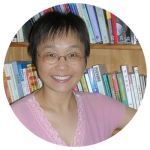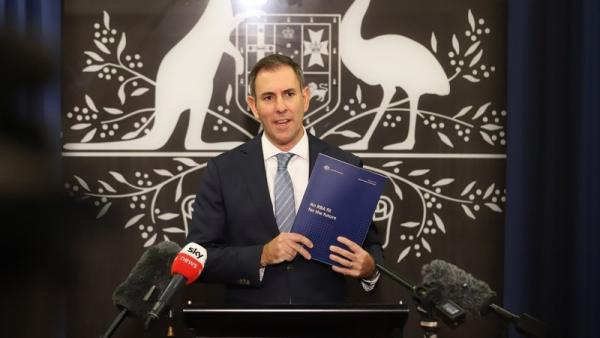@JEChalmers / Twitter

Wanning Sun, Deputy Director, UTS:ACRI; Professor of Media and Communication, Faculty of Arts and Social Sciences, UTS |
This article appeared in Crikey on August 16 2023.
A treasurer’s main job is to manage the economy and worry about inflation rates, minimum wages, tax cuts, the cost of living and similar metrics — presumably because they will negatively affect the well-being of Australians if managed badly.
Yet this connection between economic management and the welfare of people seems to have somewhat eluded the previous Coalition government. This may explain why its robodebt squad thought treating humans as little more than economic units and disembodied statistics was the most effective way of governing the poor and disadvantaged.
Never mind that more than 370,000 people were wrongly issued with debt notices. Never mind the humans at the receiving end, whether they felt they had been treated with dignity, trust and respect. Never mind whether they believed the system was treating them fairly and that they had equal access to justice. It seems these matters couldn’t have been further from the minds of Scott Morrison, Christian Porter and their algocratic colleagues.
So when Treasurer Jim Chalmers decides to go beyond cut-and-dried economic metrics to try to assess the well-being of the population, we know he is on to a good thing. ‘Measuring What Matters‘ was released last month, and Chalmers describes it as the ‘first ever national well-being framework’. Some academics believe that the report ‘should be acknowledged as a significant and positive step in the right direction’.
Chalmers says:
‘Measuring What Matters’ helps us put people and progress, fairness and opportunity at the very core of our thinking about our economy and our society, now and into the future.
These words are music to the ears of humanities and social sciences researchers, many of whom are likely to be considered by conservative critics of the initiative as a bunch of utopian progressives just waiting to lap up feel-good talk.
The report measures well-being by using 50 indicators grouped into five broad themes: health, security, sustainability, cohesiveness and prosperity. It has done a reasonably good job on the gender front, but there needs to be a more nuanced representation of the multicultural experience in future iterations.
It includes a disclaimer noting that the whole-of-population indicators are not an accurate measure of First Nations peoples well-being, as they are limited in their ability to represent the intrinsic cultural differences or acknowledge the past practices that have had detrimental effects.
The experiences of Australians from multicultural communities are also counted as part of the whole population, despite the report’s admission that generalised data can, at times, ‘mask different experiences and outcomes’ for people in different social groups. It also says the government will pursue ‘further disaggregation in future iterations’.
Chalmers should make sure this future work does indeed follow. If it doesn’t, the general data on well-being in terms of justice, diversity, acceptance and inclusion at best remains inaccurate, and at worst runs the risk of reproducing the very problems the well-being framework seeks to solve.
University of Technology Sydney professor emeritus Andrew Jakubowicz, a sociologist who has been researching multiculturalism in Australia for several decades, believes the report is an ‘interesting trigger of further reflection’ but has a serious methodological problem.
For example, it almost completely misses contemporary emphases on ‘intersectionality’ and its critical role in analysing distributional justice. This means that the real stratification of Australian society — by multiple levels of advantage and disadvantage covering class, gender, age, ethnicity, Indigeneity, location and disability — is obscured in the simplistic presentation of data through one dimension at a time.
Older, poorer Aboriginal women with disability in remote areas, and wealthier, mature white men in good health in urban localities cannot be averaged to represent the typical Australian.
Indeed, although social cohesion, justice and equity are given as key benchmarks for measuring well-being, there is no mechanism to ‘measure’ the experience of multicultural communities. Such omissions make it difficult to square the report with reality.
For instance, the reported improvement on the score of discrimination and inclusion doesn’t cohere with increased rates of racist incidents against Asian Australians. Nor does the claim of improved levels of acceptance of diversity sit easily with recent reports of increased suspicion of Chinese Australians’ loyalty to Australia.
As for the claimed improvement in ‘trust in others’, this jars with recently published findings suggesting that 43 percent of Australians do not trust their fellow Chinese Australians, and instead believe that ‘Australians of Chinese origin can be mobilised by the Chinese government to undermine Australia’s interests and social cohesion’.
To single out the experience of Chinese Australians is not to say they deserve separate treatment, even though Australians with Chinese ancestry comprise 5.5 percent of the nation’s population. It is merely to make the point that future iterations of the well-being framework need to document how Australia’s foreign policy and its positioning in global geopolitics affect domestic social cohesion, and possibly affect individuals’ sense of belonging, and the well-being of diverse cohorts of migrants who call Australia home.
The well-being framework seeks to put people at the centre. But the joys, fears, aspirations and anxieties of the individuals cannot be easily and vividly captured in percentage terms. Anthropologists know too well that when it comes to measuring emotional, mental and psychological experiences, numbers and percentages tell only a tiny fragment of the story. Unlike wage increases, tax cuts and unemployment rates, concepts such as well-being, life satisfaction, happiness and belonging are fuzzy and vaguely defined.
That is why anthropologists and sociologists have responded to the well-being report with excitement and frustration in equal measure. They know that unless in-depth interviews, household visits and life histories are also used in follow-up work, no amount of quantitative data can reveal the sense of misery, desperation and despair experienced by the victims of robodebt.
With this in mind, for future well-being reports, Chalmers may want to venture beyond the orbit of economists and policy researchers and seek help from anthropologists, sociologists, creative writers and artists.
Further, it might make sense for him to recast the well-being framework as a cross-departmental initiative to avoid the scenario of the ‘left hand not talking to the right hand’. Interestingly, the well-being framework was released in the same month as the Department of Home Affairs launched its ‘Multicultural Framework Review’. Surely there’s a potential connection and synergy there?
These problems notwithstanding, the well-being framework is one small step for the treasurer, but one giant leap in the right direction in the nation’s economic philosophy.
Author
Professor Wanning Sun is Deputy Director at UTS:ACRI and a Professor of Media and Communication in the Faculty of Arts and Social Sciences at UTS.


